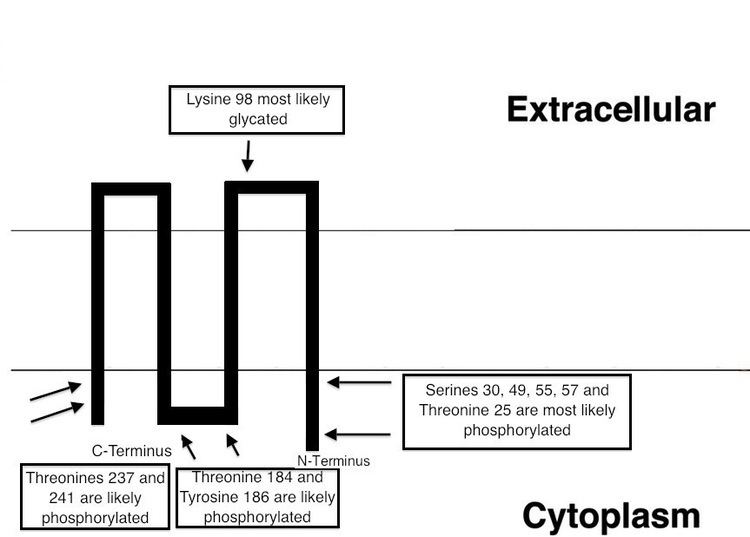Species Human Entrez 55863 | Human Mouse Ensembl ENSG00000171204 | |
 | ||
External IDs MGI: 1915722 HomoloGene: 10222 GeneCards: TMEM126B | ||
Transmembrane protein 126B is a protein that in humans is encoded by the TMEM126B gene. TMEM126B is a transmembrane protein with unknown function. The Tmem126b gene is conserved in mammals.
Contents
Discovery
TMEM126B was first discovered in a study of protein expression in tissues of the hypothalamus-pituitary-adrenal axis using full cDNA cloning. It has since been detected in other tissues.
Gene
TMEM126B is located on chromosome 11 in humans, flanked by the following genes:
Translation
A conceptual translation of the TMEM126B protein, including a projection of the secondary structure, predictions of transmembrane regions, and putative phosphorylation and glycation sites is included below:
Tissue distribution
TMEM126B is expressed in most tissue types, with the notable exceptions of adipose tissue, ear tissue, the larynx, lymph tissue, nerve tissue, pituitary gland, spleen, thymus, thyroid, trachea, and umbilical cord. It also appears to be highly expressed in parathyroid, bone marrow, and urinary bladder tissue. There is also evidence that one of the isoforms of TMEM126B is expressed in the cell membrane of memory B cells of the adaptive immune system.
Predicted properties
The following properties of TMEM126B were predicted using bioinformatic analysis:
Structure
A cartoon representation, tentatively based on the phosphorylation and hydrophobicity data is shown below.
